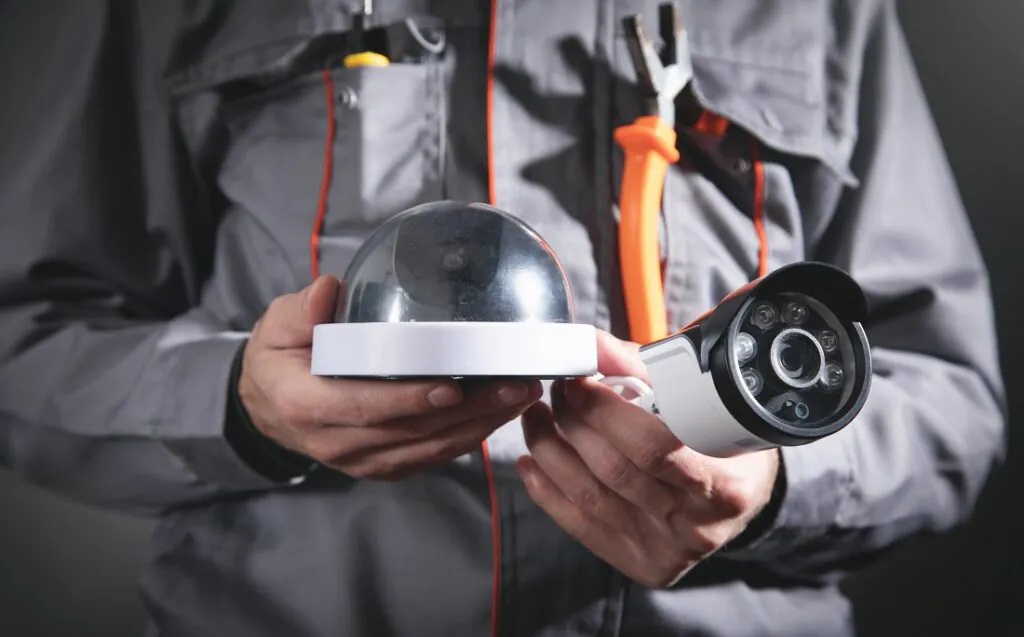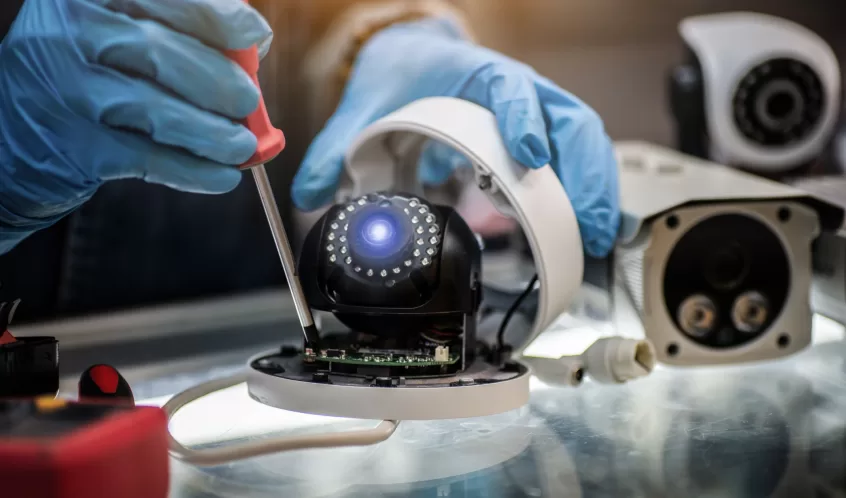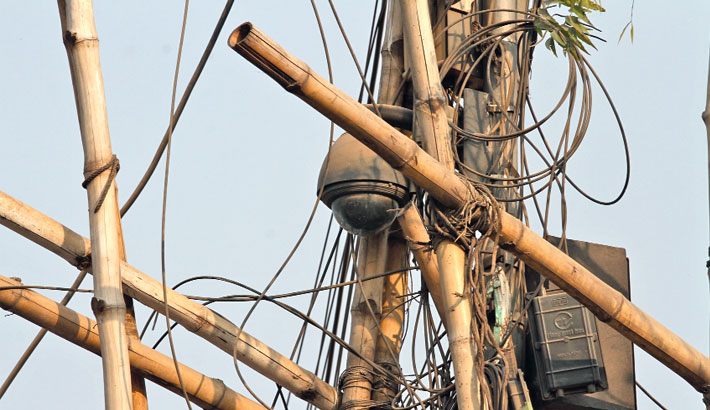ARTICLES
- HOME
- -
- ARTICLES
A Comprehensive Guide to Troubleshooting Common CCTV Monitoring Issues

In today's world, closed-circuit television (CCTV) monitoring systems play a crucial role in ensuring the safety and security of various premises, from residential homes to commercial establishments and industrial facilities. However, like any other technological system, CCTV monitoring can encounter issues that may hinder its proper functioning. As a professional in the field, I understand the importance of being well-equipped to troubleshoot and resolve these problems promptly.

Troubleshooting CCTV monitoring systems requires a comprehensive understanding of the components involved, as well as a systematic approach to identifying and addressing the root causes of issues. In this guide, I aim to provide you with a comprehensive overview of common CCTV monitoring problems and effective troubleshooting techniques to resolve them efficiently.
Whether you're a seasoned professional or new to the field, this guide will equip you with the knowledge and skills necessary to tackle a wide range of CCTV monitoring challenges, ensuring that your systems operate smoothly and reliably.
Common issues in CCTV monitoring:
CCTV monitoring systems, while designed for reliability and durability, can encounter various issues that may compromise their performance. Some of the most common problems include:
- Video loss or disruption
- Poor image quality
- Network connectivity issues
- Storage and recording problems
- Camera malfunctions
- Power supply and electrical issues
Understanding these common issues is the first step towards effective troubleshooting. In the following sections, we will delve into each of these problems and explore practical solutions to address them.
Understanding CCTV monitoring systems:
Before we dive into troubleshooting techniques, it's essential to have a solid understanding of the components that make up a CCTV monitoring system. A typical CCTV system consists of the following elements:

- Cameras
- Video transmission cables or wireless connections
- Video recording devices (DVRs or NVRs)
- Monitoring stations or displays
- Power supplies and backup systems
- Network infrastructure (switches, routers, etc.)
Each component plays a crucial role in the overall functionality of the system, and understanding their interrelationships is key to effective troubleshooting. By gaining a comprehensive understanding of how these components work together, you'll be better equipped to identify and resolve issues that may arise.
Troubleshooting steps for video loss issues:
Video loss or disruption is one of the most common problems encountered in CCTV monitoring systems. This issue can be caused by various factors, including cable damage, network congestion, or hardware malfunctions. To troubleshoot video loss issues, follow these steps:
-
Check cable connections: Inspect all cable connections, both at the camera and recording device ends, to ensure they are secure and free from damage.
-
Verify network connectivity: If your CCTV system relies on a network connection, check for any network issues that may be causing video disruption. Test the network by pinging the camera or recording device IP addresses.
-
Restart devices: Sometimes, a simple restart of the affected devices can resolve temporary glitches or software issues. Restart the cameras and recording devices one by one, and check if the video feed is restored.
-
Inspect hardware components: If the issue persists, inspect the hardware components for any physical damage or signs of wear and tear. Replace any faulty components as necessary.
-
Check software configurations: Ensure that the software settings on the cameras and recording devices are configured correctly. Incorrect settings can sometimes cause video loss or disruption.
By following these steps systematically, you can isolate and resolve video loss issues in your CCTV monitoring system.
Resolving image quality problems in CCTV monitoring:
Poor image quality can significantly impact the effectiveness of a CCTV monitoring system. Blurred, distorted, or low-resolution images can make it difficult to identify individuals or events accurately. To troubleshoot image quality problems, consider the following steps:

-
Clean camera lenses: Dust, dirt, or moisture buildup on camera lenses can degrade image quality. Regularly clean the lenses with a soft, lint-free cloth and approved cleaning solutions.
-
Adjust camera settings: Improper camera settings, such as exposure, white balance, or focus, can contribute to poor image quality. Consult the camera manufacturer's documentation and adjust the settings accordingly.
-
Check lighting conditions: Inadequate or excessive lighting can also affect image quality. Ensure that the camera's field of view is properly illuminated, and adjust the camera settings or lighting conditions as needed.
-
Upgrade camera hardware: If the image quality issues persist despite adjustments, it may be time to upgrade the camera hardware. Newer cameras often offer better image sensors and advanced image processing capabilities.
-
Optimize video compression settings: Excessive video compression can lead to artifacts and degraded image quality. Adjust the compression settings on the recording device to strike a balance between file size and image quality.
By addressing these potential causes, you can significantly improve the image quality of your CCTV monitoring system, ensuring that critical details are captured with clarity.
Dealing with network connectivity issues:
In modern CCTV monitoring systems, network connectivity plays a vital role in transmitting video data and enabling remote access. Network issues can lead to video disruptions, delayed recordings, and limited accessibility. To troubleshoot network connectivity problems, follow these steps:

-
Check network equipment: Inspect network switches, routers, and other equipment for proper connections, power supply, and any indicator lights that may suggest a malfunction.
-
Test network speeds: Use network testing tools to measure the available bandwidth and identify any bottlenecks or congestion points that may be impacting video transmission.
-
Verify network configurations: Ensure that network settings, such as IP addresses, subnet masks, and gateways, are correctly configured on all CCTV components.
-
Update firmware and drivers: Outdated firmware or drivers on network equipment or CCTV devices can sometimes cause compatibility issues. Update to the latest versions recommended by the manufacturers.
-
Implement network segregation: In complex environments, segregating CCTV traffic from other network traffic can help ensure reliable video transmission and prevent network congestion.
-
Consider wireless alternatives: If wired network connectivity is problematic, explore wireless solutions such as Wi-Fi or dedicated wireless bridges for CCTV transmission.
By addressing network connectivity issues proactively, you can minimize video disruptions and ensure seamless remote access to your CCTV monitoring system.
Fixing storage and recording problems:
CCTV monitoring systems rely heavily on storage devices to record and archive video footage. Storage and recording problems can lead to data loss, incomplete recordings, or system crashes. To troubleshoot these issues, consider the following steps:
-
Check storage capacity: Ensure that your storage devices have sufficient capacity to accommodate the recording requirements of your CCTV system. Upgrade or add additional storage as needed.
-
Verify storage configurations: Review the storage configurations on your recording devices, such as recording schedules, resolution settings, and retention periods, to ensure they are set up correctly.
-
Perform disk health checks: Use disk diagnostic tools to check the health and integrity of your storage devices. Replace any failing or damaged disks promptly.
-
Implement RAID configurations: For critical installations, consider implementing RAID (Redundant Array of Independent Disks) configurations to provide redundancy and protect against data loss in case of disk failures.
-
Optimize recording settings: Adjust recording settings, such as resolution and frame rate, to strike a balance between storage requirements and image quality.
-
Implement backup strategies: Implement regular backup strategies to safeguard your recorded footage and ensure data recovery in case of storage failures or system crashes.
By addressing storage and recording issues proactively, you can ensure the integrity and availability of your CCTV footage, enabling effective monitoring and incident investigation.
Troubleshooting camera issues in CCTV monitoring:
Cameras are the eyes of your CCTV monitoring system, and any issues with these devices can significantly impact the overall performance. To troubleshoot camera issues, follow these steps:
-
Check physical connections: Ensure that all cable connections, including power and data cables, are securely connected to the camera and free from damage.
-
Inspect camera positioning: Verify that the camera is positioned correctly and has an unobstructed view of the desired area. Adjust the camera's position or angle as needed.
-
Update camera firmware: Outdated firmware can cause compatibility issues or introduce bugs. Check for available firmware updates from the camera manufacturer and install them as recommended.
-
Reset camera settings: In some cases, resetting the camera to its default settings can resolve software-related issues or configuration conflicts.
-
Test with a spare camera: If the issue persists, try swapping the problematic camera with a known working spare unit. This can help determine if the issue is camera-specific or related to other components.
-
Replace faulty cameras: If all troubleshooting efforts fail, it may be necessary to replace the faulty camera with a new unit.
By following these steps, you can quickly identify and resolve camera-related issues, ensuring that your CCTV monitoring system captures clear and reliable footage.
Handling power supply and electrical problems:
CCTV monitoring systems rely on a stable and consistent power supply to function properly. Power supply and electrical issues can lead to system failures, intermittent operation, or even damage to components. To troubleshoot these issues, consider the following steps:

-
Check power sources: Ensure that all power sources, including main power supplies and backup batteries, are functioning correctly and providing the required voltage and current.
-
Inspect electrical wiring: Inspect all electrical wiring, including power cables and grounding connections, for any signs of damage, loose connections, or improper installation.
-
Test power supply units (PSUs): Use a multimeter or power supply tester to verify the output voltages and currents of individual PSUs. Replace any faulty or underperforming units.
-
Implement surge protection: Install surge protection devices to safeguard your CCTV components from voltage spikes and power surges, which can cause damage or disruptions.
-
Ensure proper grounding: Proper grounding is essential for protecting your CCTV system from electrical interference and static discharge. Verify that all components are properly grounded according to manufacturer recommendations.
-
Consider uninterruptible power supplies (UPS): Implement UPS systems to provide backup power and prevent data loss or system crashes during power outages or brownouts.
By addressing power supply and electrical issues proactively, you can ensure the reliable and continuous operation of your CCTV monitoring system, minimizing downtime and potential data loss.
Best practices for preventing common CCTV monitoring issues:
While troubleshooting is essential for resolving issues as they arise, implementing best practices can help prevent many common CCTV monitoring problems from occurring in the first place. Here are some recommended best practices:
-
Regular maintenance and inspections: Establish a routine maintenance schedule to inspect and clean all CCTV components, including cameras, cables, and recording devices. This can help identify potential issues before they escalate.
-
Proper installation and configuration: Ensure that all CCTV components are installed and configured according to manufacturer recommendations and industry best practices. Proper installation and configuration can prevent many issues from occurring.
-
Environmental considerations: Take into account the environmental conditions where your CCTV system is installed, such as temperature, humidity, and exposure to elements. Choose components and housings that are suitable for the specific environment.
-
Software and firmware updates: Regularly check for and install software and firmware updates from the manufacturers. These updates often include bug fixes, security patches, and performance improvements.
-
Redundancy and backup strategies: Implement redundancy measures, such as RAID configurations or backup power supplies, to ensure continuity of operations in case of component failures or power outages.
-
Training and documentation: Provide proper training to staff responsible for operating and maintaining the CCTV monitoring system. Maintain comprehensive documentation, including system diagrams, configurations, and troubleshooting procedures.
By adopting these best practices, you can significantly reduce the likelihood of common CCTV monitoring issues and ensure the long-term reliability and performance of your system.
Conclusion:
Mastering the art of troubleshooting CCTV monitoring systems is essential for ensuring the continuous and effective operation of these critical security systems. By understanding common issues, following systematic troubleshooting steps, and implementing best practices, you can resolve problems efficiently and minimize downtime.
Remember, troubleshooting is an ongoing process that requires patience, attention to detail, and a willingness to learn and adapt. Stay up-to-date with the latest technologies, industry standards, and manufacturer recommendations to maintain a high level of proficiency in CCTV monitoring troubleshooting.
If you're experiencing issues with your CCTV monitoring system or need assistance in implementing best practices, don't hesitate to reach out to our team of experts. We offer comprehensive troubleshooting services and can help you optimize your system for maximum performance and reliability. Contact us today to schedule a consultation and take the first step towards mastering CCTV monitoring troubleshooting.
By following the guidance provided in this comprehensive guide, you'll be well-equipped to tackle any CCTV monitoring challenges that come your way, ensuring the safety and security of your premises and the peace of mind that comes with a well-functioning surveillance system.
